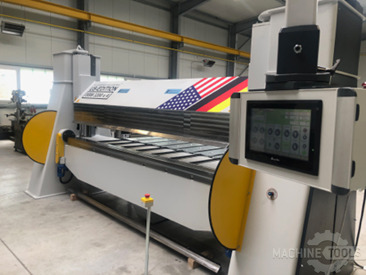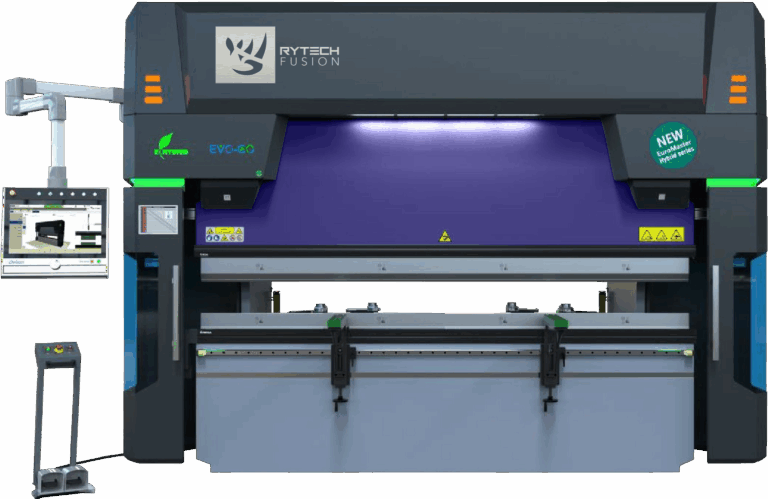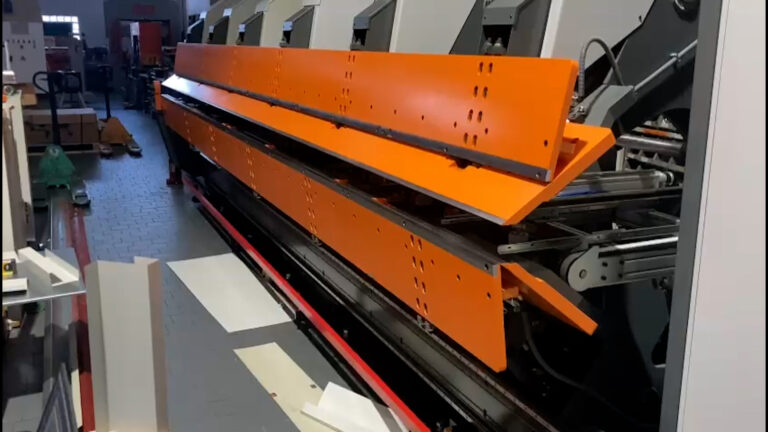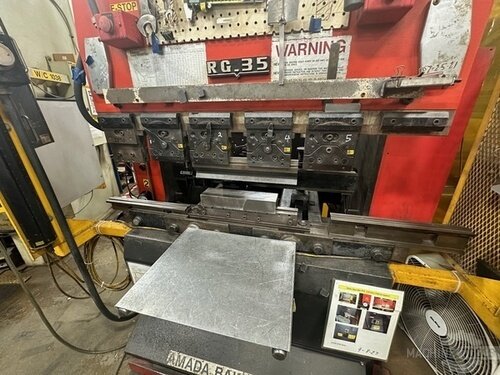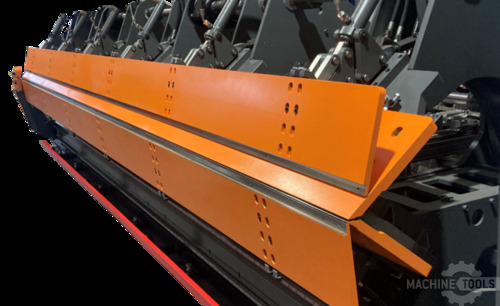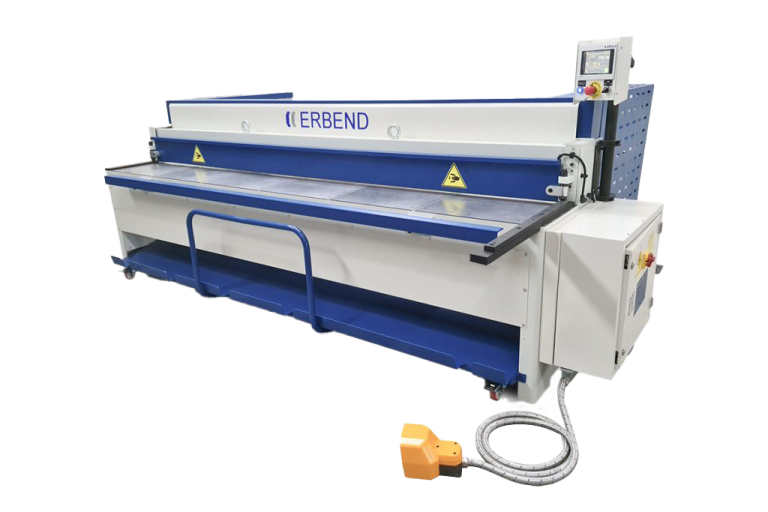As someone who grew up in the heart of southern Chicago’s steel country, I’ve spent my career side by side with the men and women who keep America’s roofs, walls, and infrastructure built to last. My journey—from hands-on shop floors to my current role as Regional Sales Executive at Mac-Tech—has always been about one thing: putting the customer first. Whether you’re running a high-volume coil-fed line or fabricating custom architectural elements, my mission is to help you evaluate, upgrade, and future-proof your sheet metal production with the best-fit technology. Let’s dive into how the latest double folder innovations—like the Stefa VHX—are transforming the way metal fabricators work.
Introduction: Unlocking New Efficiencies in Sheet Metal Bending
Today’s market demands more than just bending metal fast—it’s about precision, consistency, and the ability to adapt on the fly. Automated double folders are redefining what’s possible: they combine positive and negative bending in a single cycle, dramatically reducing material handling and operator intervention. With reinforced, removable tooling, folding beams that allow for tight geometries, and hybrid servo-hydraulic technology, the new generation of machines is tailor-made for shops looking to increase throughput while reducing labor and rework.
Leveraging Experience: How Advanced Double Folders Transform Coil-Fed Production
Over the years, I’ve helped shops transition from manual folders and press brakes to fully automated coil-fed lines. The difference is night and day. Double folders excel in environments where both speed and flexibility matter. Positive and negative bends are performed in sequence, eliminating manual flipping and double handling. On the Stefa VHX, for example, the hybrid drive system combines the best of hydraulic muscle with the precise, simultaneous axis movement only electric servos can deliver. This means faster cycle times and less downtime between jobs—critical for roofing, architectural, and industrial panel fabrication.
Evaluating Your Current Fabrication Workflow: Identifying Bottlenecks in Slitting, Forming, and Folding
Before recommending an upgrade, I always start with a thorough workflow analysis. Where are your operators spending the most time? Are you waiting on slitting, stacking, or repeated setups at the folder? Double folders with automatic grippers and programmable backstops can often replace two or more manual stations, freeing up skilled labor for higher-value tasks. If you’re seeing excessive scrap, slow changeovers, or inconsistent bends, it’s time to take a closer look at automation options.
Key Performance Metrics: Speed, Precision, and Waste Reduction in Automated Bending
It’s not just about how fast a machine cycles—it’s about the total process time from sheet in to finished part out. Automated double folders routinely cut handling time by 30–50% compared to traditional folders. Hybrid systems like the VHX also reduce idle energy consumption by up to 80%, thanks to servo-driven hydraulics that only draw power when needed. With three-dimensional safety systems and customizable tooling, you get tighter tolerances, fewer errors, and a safer work environment. For many shops, this means higher first-pass yield and less rework—a direct boost to your bottom line.
Upgrading to Next-Generation Machines: What to Consider for Your Sheet Metal Operation
When it’s time to invest, consider not just today’s needs but tomorrow’s growth. Do you need to form thicker gauges—up to 2mm (14ga)? Will you be running longer panels—21′ or even 27.5′? Machines like the Stefa VHX offer modular tooling, extendable handling tables, and gripper-finger back gauges for maximum flexibility. For those serving diverse regional markets, customizable tool geometries are a must. And don’t overlook safety—look for systems with multi-dimensional operator detection and robust physical guarding.
Tailoring Solutions: Matching Equipment Capabilities to Your Unique Production Needs
No two shops are alike. My role at Mac-Tech is to help you compare not just folders, but also shears, slitters, decoilers, downspout formers, and panel benders to engineer a solution that fits your workflow and budget. Need semi-automatic operation for specialty jobs? Want to integrate with existing coil lines? We’ll walk your floor, review your specs, and match equipment capabilities to your production mix. Custom automation is within reach for shops of all sizes.
DR. HOCHSTRATE 3200*6
ABM 38
Real-World Results: Customer Success Stories in Automated Metal Folding
I’ve seen firsthand how the right machine can change a business. One Midwest roofing supplier cut their panel lead times in half after upgrading to a double folder, freeing up cash flow and expanding their service range. Another customer in architectural metals eliminated a bottleneck by automating both positive and negative bends, boosting their output without hiring additional staff. The key is a solution that’s engineered for your unique challenges—and backed by a partner who’s there for the long haul.
Conclusion: Maximizing Efficiency and Minimizing Waste with Expert Guidance
Ultimately, upgrading your sheet metal operation is about more than just machines—it’s about building a foundation for growth. With the right double folder, you can achieve faster cycle times, tighter tolerances, and lower labor costs, all while maintaining the flexibility to adapt to new market demands. My commitment is to walk you through every option, answer your questions honestly, and deliver solutions that keep your business at the forefront of American manufacturing.
Frequently Asked Questions
When is the right time to upgrade a roll former or folder?
If you’re experiencing excessive downtime, rising maintenance costs, or can’t keep up with current demand, it’s time to evaluate an upgrade. Newer machines offer automation, energy savings, and tighter tolerances that older equipment simply can’t match.
How do servo-driven folders compare to hydraulic systems?
Servo-driven folders provide faster, quieter, and more precise movement, especially for complex bends. Hybrid systems combine servo and hydraulic benefits—delivering both speed and power while reducing idle energy consumption.
What’s the difference between a combi-beam and a double folder?
A combi-beam folder typically switches tooling to accommodate different bend types, whereas a double folder performs both positive and negative bends in a single cycle—dramatically reducing handling and increasing throughput.
What are signs a roll forming line is no longer cost-effective?
Watch for chronic maintenance issues, excessive scrap, slow changeovers, or an inability to form new profiles. If your line is holding back production or quality, it’s time to consider an upgrade.
Can double folders handle custom tooling for special profiles?
Absolutely. Modern double folders like the Stefa VHX offer customizable tooling geometries to meet regional or specialty requirements. We work with you to ensure the machine fits your unique product mix.
What training and support does Mac-Tech provide after installation?
We provide comprehensive on-site training, remote support, and preventive maintenance to keep your equipment running at peak performance. Our goal is your long-term success, not just the sale.
Ready to see how an automated double folder can transform your production? Let’s schedule a walkthrough, live demo, or a custom upgrade quote—no pressure, just straight answers and expert guidance. Call me directly at 414-232-7929 or email pat@mac-tech.com, or fill out the form below and I’ll be in touch personally.
Get Weekly Mac-Tech News & Updates

